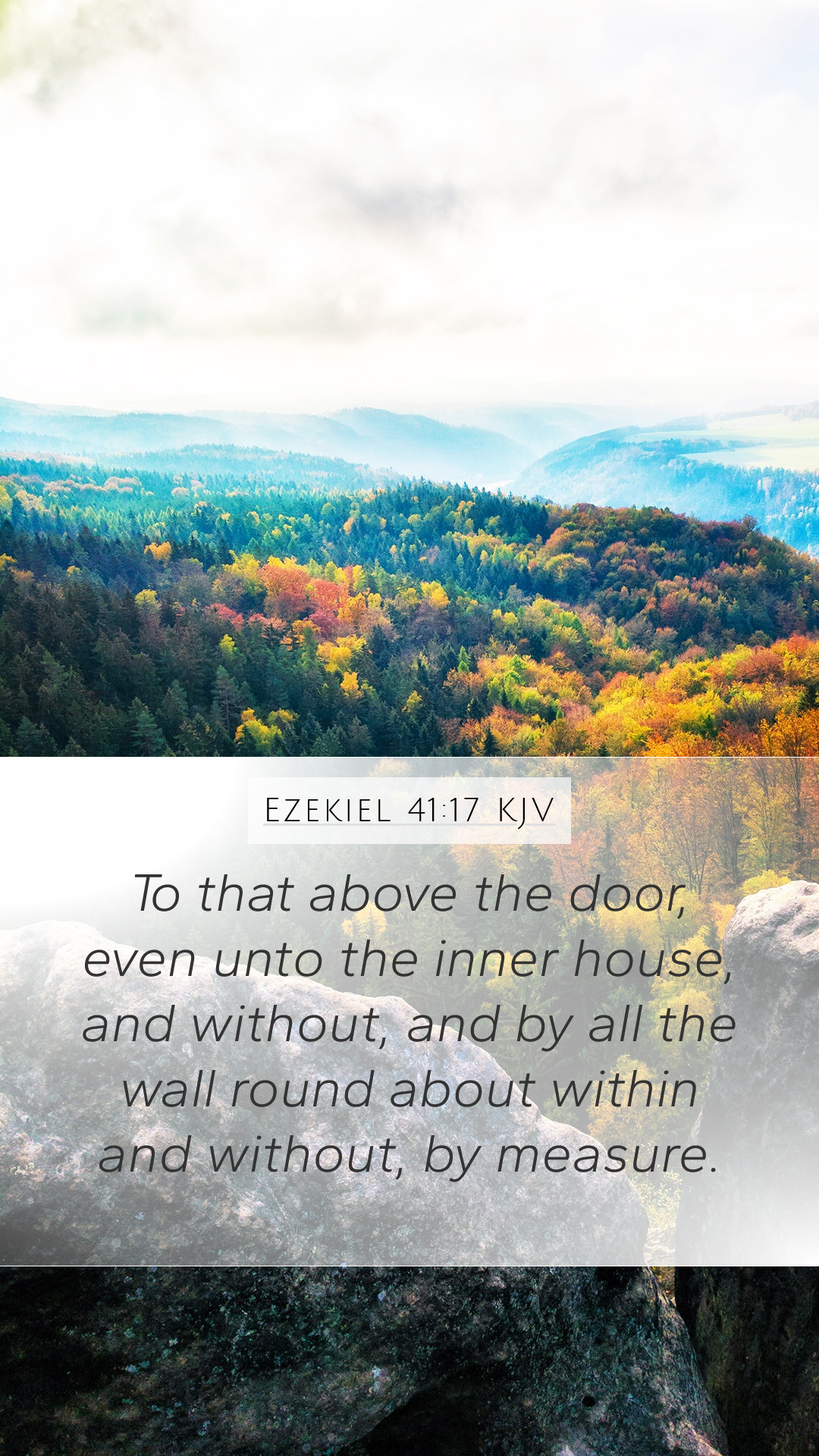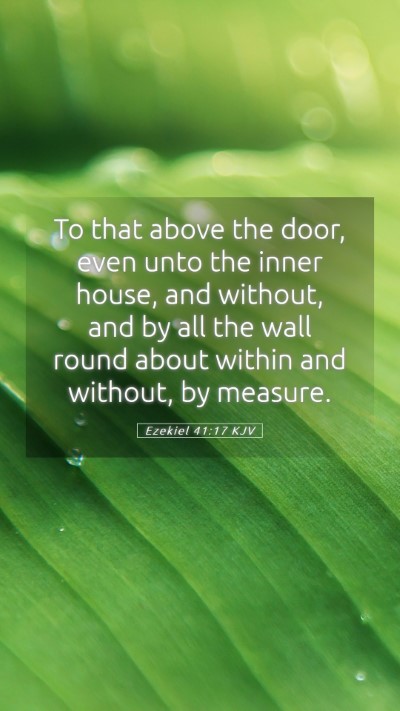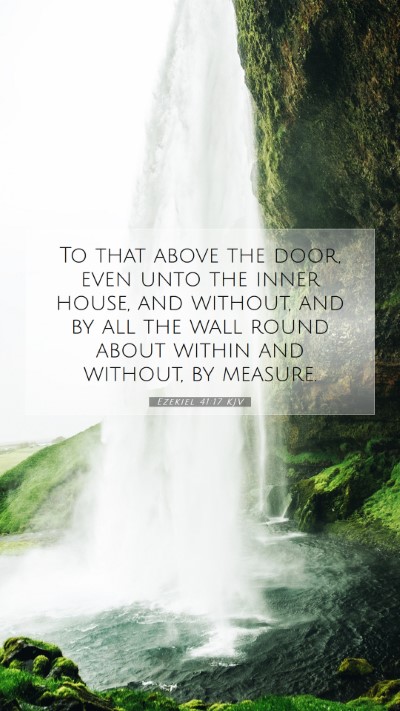Bible Verse Commentary on Ezekiel 41:17
Understanding the verse Ezekiel 41:17 requires a deep dive into its historical, cultural, and theological context. This commentary draws insights from renowned public domain commentaries including those of Matthew Henry, Albert Barnes, and Adam Clarke.
Verse Text
Ezekiel 41:17 reads: “And the space between the door posts of the temple was twenty cubits broad; and the doors of the temple were narrow.”
Overview and Context
Ezekiel’s vision of the Temple is a critical component of his prophetic ministry, marking a profound insight into future restoration and divine design. The chapter illustrates intricate details about the Temple's architecture, symbolic meaning, and spiritual significance.
Verse Interpretation
The verse describes the measurements and the navigation through the sacred space, indicating the grandeur and intentionality of God’s design for worship.
Insights from Commentaries
- Matthew Henry: This commentary focuses on the significance of the temple's dimensions, highlighting the contrast between the broad space of the doorposts and the narrowness of the doors. This duality symbolizes both access to God as well as the reverent recognition of His holiness.
- Albert Barnes: Barnes notes that the measurements signify not just physical space but also the spiritual conditions required for approaching God. He emphasizes the necessity of preparation and purification prior to entering sacred spaces.
- Adam Clarke: Clarke suggests that the architectural specifications reflect God’s meticulous nature and establish a standard for worship. He also points to the representation of the door’s width and height as indicative of the opening to divine grace, but with a reminder of the need for humility in approaching God.
Theological Significance
The anatomical study of the temple in Ezekiel suggests that God desires an intimate yet reverent relationship with His people. The narrative not only serves as a blueprint for physical structures but also throws light on the inner disposition of believers.
Implications for Worship
- The broad doorposts represent openness and accessibility to God’s presence.
- The narrow doors remind worshippers that, while God is available to all, entering into His presence requires a certain level of reverence and preparation.
- This symbolizes the journey of sanctification, as believers must strive to meet the holiness associated with divine communion.
Historical Context
During the time Ezekiel wrote, the Israelites were in exile. Thus, this vision provided hope and a future orientation for restoration and worship practices, pointing to the eventual return to a place where God would dwell among His people.
Application of Ezekiel 41:17
In modern Christian living, the insights from this verse can guide individuals and communities in how they worship and approach their relationship with God. Here are a few applications:
- Understanding that spiritual paths may require a balance of accessibility and sacred reverence.
- Recognizing the importance of ritual and space in leading us into deeper worship experiences.
- Encouraging self-examination and dedication as preconditions for spiritual encounters.
Related Cross References
- 2 Chronicles 3:4: Description of the dimensions of Solomon's Temple.
- Hebrews 9:1-5: Explanation of the structure of the earthly sanctuary.
- Revelation 21:16: The New Jerusalem's dimensions signify the completeness and perfection of God's kingdom.
Conclusion
Overall, Ezekiel 41:17 serves as a multifaceted passage illustrating God's design for worship, the nature of approaching Him, and serves as a reminder of the broader spiritual truths concerning accessibility and purity in the worship experience.


